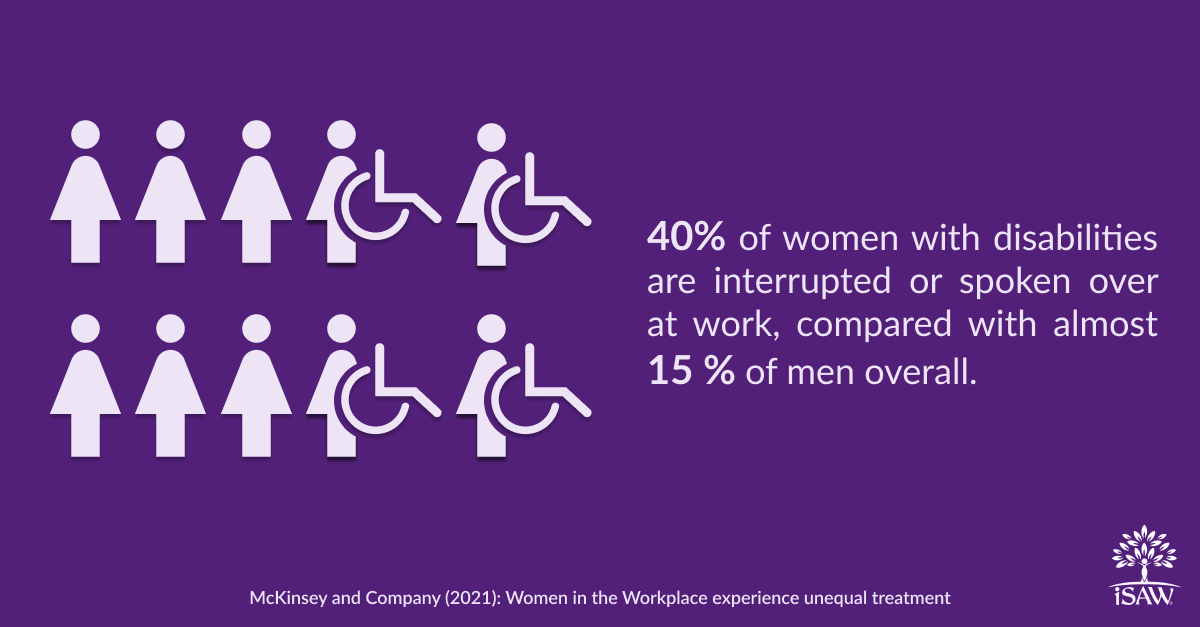
Study and Purpose: A study of the corporate America, concentrated on women with disabilities experiences and opportunities at work, to reveal the existing practices of inclusion and diversity within companies since it is vital to ensure that no one is left behind to enhance growth, productivity and representation.
Key Findings: Nonetheless, the study found out that, “about 1 in 10 working women has a disability and women with disabilities are often undervalued reflected by the way they are treated. Women with disabilities are less likely to be supported by their managers because they are perceived as too angry or emotional. Less than half of women with disabilities felt that they have equal opportunity for advancement, and almost a quarter noted their disability has led to missing out on a raise, promotion, or chance to get ahead”. McKinsey and Company (2021). Therefore, creating an income gap between persons with a disability and not.
A key factor of the study is that Only about 25 percent of employees mentioned that their company prioritizes disability in its Diversity, Equity and Inclusion (DEI) efforts, compared to more than 40 percent who noted that company prioritizes gender and sexual orientation and almost 60 percent who stated that their company prioritizes race. Hence, reflecting that companies are not taking adequate effort to curb challenges women with disabilities face and change in attitude to ensure impartiality at the workplace.
Conclusion: There is an indication that women with disabilities face significantly more difficulties and experience inequality in accessing promotion and they do not participate in decision making. It is important for workplaces to ensure that there is adequate representation in all levels to ensure their needs at work are addressed with a fellow colleague who understand their concerns.
Data Facts:
- Women with disabilities felt segregated hence they were more likely than women overall to consider leaving the workforce or downshifting their careers.
- Women with disabilities face a lot of barriers at work, they face double discrimination (being a women and women with a disability) that require company to effectively pay attention to their peculiar needs.
iSAW Sharp Summary






